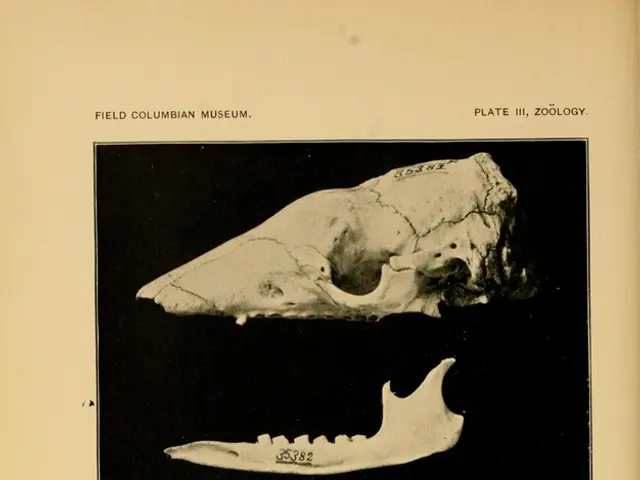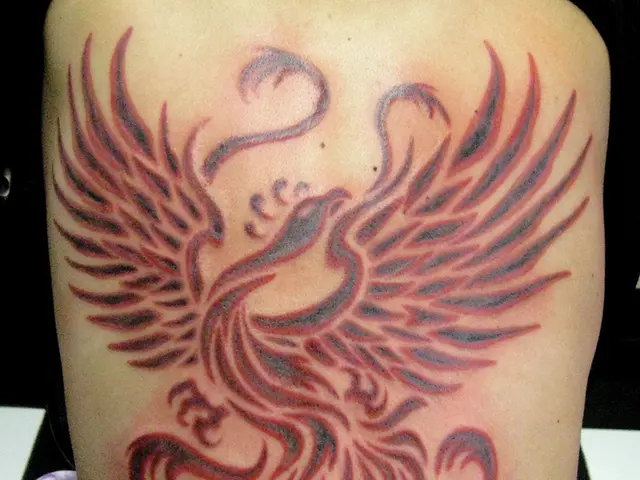Differentiating Age Spots from Skin Cancer: Guidelines for Identification
Age spots and skin cancer, both can seem similar yet differ significantly. Here's a breakdown of these two conditions and their unique characteristics to help spot the difference.
Age Spots
Age spots, also known as solar lentigines or liver spots, are small, darker patches that appear on the skin. These patches are generally flat, smooth, and devoid of any itchiness or crustiness. Age spots develop due to increased melanin production from exposure to the sun's UV radiation. They usually manifest from middle age onwards and are more common on light skin but can appear on any skin tone.
Skin Cancer
Unlike age spots, skin cancer is a potentially life-threatening scenario. Similar to age spots, skin cancer tends to develop in sun-exposed areas due to excessive UV radiation damage from the sun or UV tanning beds. Skin cancer arises when skin cells are damaged, causing them to multiply and spread at an abnormal rate.
There are three common types of skin cancer: basal cell carcinoma, squamous cell carcinoma, and melanoma. Another mark that can mimic age spots is actinic keratosis, a precancerous growth that needs attention.
If you notice any new or changing marks on your skin, keep a watchful eye, and consult a healthcare professional if any symptoms of skin cancer or actinic keratosis appear.
Symptom Comparison
Age spots are usually flat, smooth, and defined with a clear border, while skin cancer symptoms can vary depending on factors such as the type of skin cancer. Skin cancer symptoms include asymmetrical shape, irregular border, changing color or size, multiple colors, and other distinct characteristics.
When to Contact a Doctor
If you notice a mark on your skin that changes in color, shape, size, or location, seems different from other marks on your skin, or is itchy, crusty, scabs over, or bleeds and does not heal within four weeks, consult a doctor immediately. Early detection can help in successful treatment.
Diagnosis and Treatment
A doctor can visually diagnose age spots based on appearance. However, a skin biopsy may be taken to rule out other conditions such as skin cancer or actinic keratosis. Treatments for age spots are typically cosmetic, while skin cancer treatment depends on factors such as the type and stage of cancer and a person's individual circumstances.
Regular skin exams are recommended for early detection of skin cancer. Remember, while age spots are benign, skin cancer is a serious condition that requires immediate attention. Stay sun-safe, and keep an eye on your skin for any unusual changes.
- For seniors and others, it's important to distinguish between age spots and skin cancer, as both may appear on the skin but have significant differences.
- Age spots, known as solar lentigines or liver spots, are typically flat, smooth, and devoid of itching or crustiness, but skin cancer can exhibit various symptoms such as asymmetrical shape, irregular border, or changing color or size.
- Skin cancer is a major health concern, with three common types being basal cell carcinoma, squamous cell carcinoma, and melanoma, while age spots are usually harmless sun-induced dark patches on the skin.
- In cases where marks on the skin change in color, shape, size, or location, seem different from other marks, or are itchy, crusty, scabbed, or bleed and do not heal within four weeks, immediate consultation with a healthcare professional is required.
- For proper diagnosis and treatment, it's essential to seek medical advice if you notice unusual changes in your skin, and regular dermatology and oncology check-ups can aid in early detection and successful treatment of skin cancer. Health and wellness practices should include sun protection, skin care, and regular medical-condition screenings.








